10 December, 1999
Fumaroles Part 1 of 2
The fumaroles around Mt Erebus are magnificent. One part of the science
being done on the volcano is the study of the many and fantastic ice towers
created by fumaroles around the crater. In many places around the mountain
the rock is either broken or the soil is porous which allows the volcano to
degas. This means that the steam and gases under pressure inside the
volcano have a place to escape besides from inside the crater When this
steam reaches the cold air of Antarctica it freezes and forms ice towers.
Each tower is different, in shape, size and structure. Some are tall and
thin and appear very fragile, others look to be study and solid ice. A few
can be climbed down inside, all have steam coming out of them
Jean Wardell, graduate student at New Mexico Tech is currently mapping and
measuring these fumaroles for their gas emission. She climbs up into the
steam vent (sometimes several feet high) and uses her instruments to measure
the speed of the gas as it escapes, the relative humidity( RH), the CO2
content., the temperature and the presence of any other gases. The gases
coming from the fumaroles are largely water vapor, and CO2.
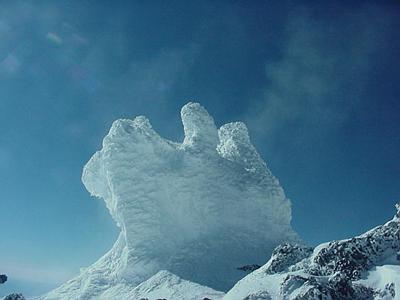
This was a parcticularly large and beautiful ice tower, I named it the Fork.
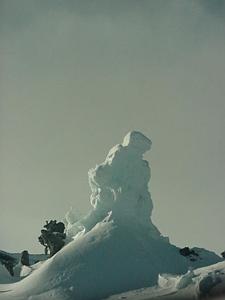
2. This was a specially tall one.
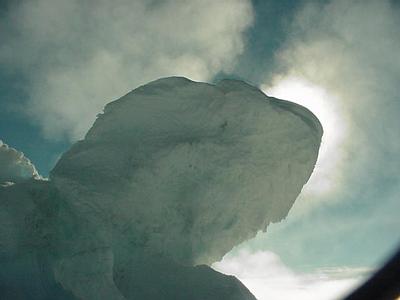
3. Here you can see how much steam is coming out of some of the ice towers. Look carefully at this one and think of a name for it.

4. I liked this one parcticularly, it has a sad look to it.
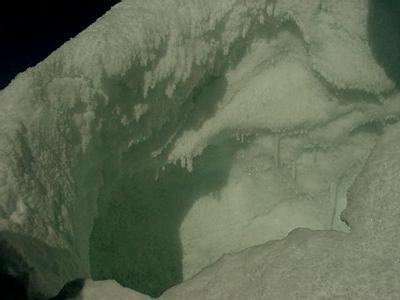
5. A close up of one of the entrances, you can see the long stellar crystals that form around the mouth. They are not icicles, more like snowflakes on a chain.
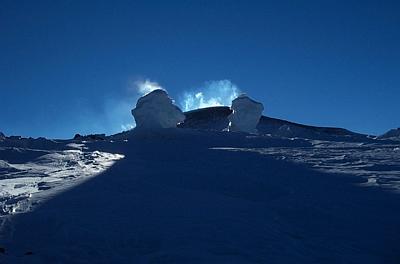
6. Late at night when the sun is low on the horizon it makes it easy to see the steam coming out of these
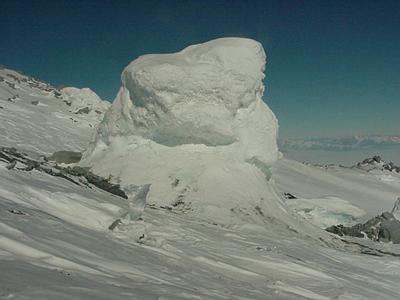
7. A rather small one on the side of the volcano.
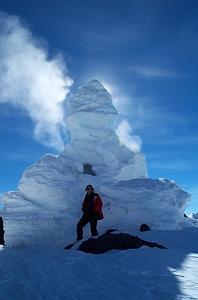
9. Perhaps the biggest one Jean climbed into. This one named Harry. (picture by Philip Kyle) See tomorrows journal for pictures of how Jean gets her work done.
Contact the TEA in the field at
.
If you cannot connect through your browser, copy the
TEA's e-mail address in the "To:" line of
your favorite e-mail package.
|
